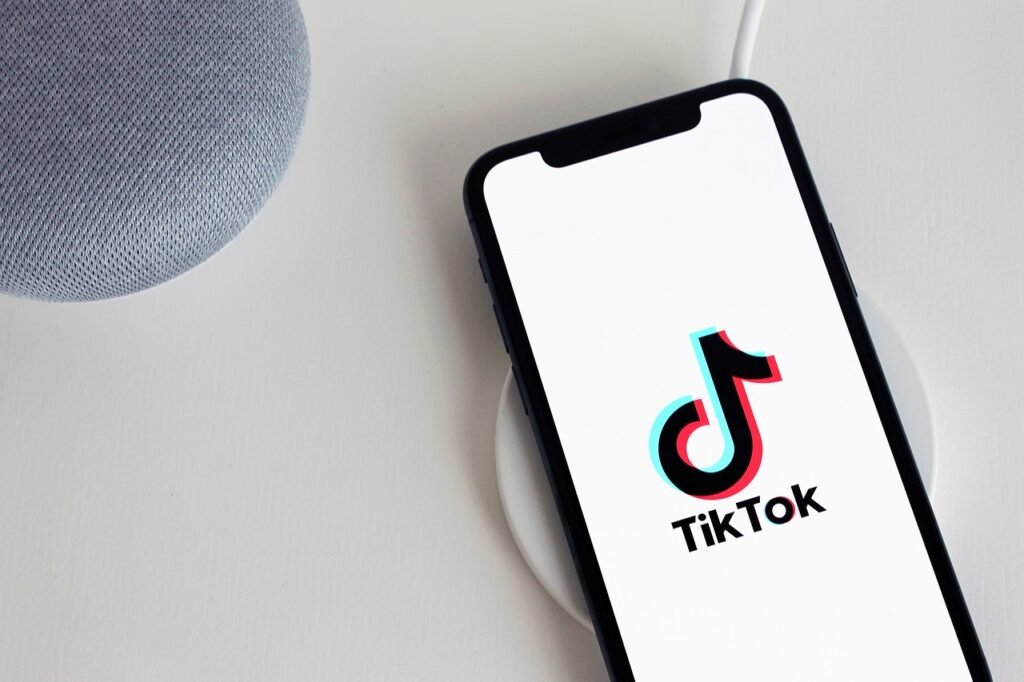Social media is constantly evolving, and staying ahead of the curve is essential for any business looking to engage with its audience. From viral challenges to interactive content, the possibilities are endless. Let’s dive into some cool and trendy social media ideas that can help you capture attention, drive engagement, and grow your online presence.
Creating Engaging Video Content
Engaging video content is a cornerstone of successful social media marketing. Videos capture attention, convey messages effectively, and drive higher engagement than other types of content. For startup founders, creating compelling video content can be a game-changer. Here are some strategic and actionable ideas to enhance your video content strategy.
Short-Form Videos
Short-form videos are the bread and butter of platforms like TikTok, Instagram Reels, and YouTube Shorts. These videos, typically 15-60 seconds long, are perfect for capturing viewers’ attention quickly and delivering your message succinctly.
One strategy is to create a series of short, themed videos. For instance, a fitness startup could produce a “30 Days of Fitness” series, with each day featuring a different exercise or health tip. Consistency keeps your audience engaged and looking forward to your next post. Additionally, using trending sounds and music can help increase the visibility of your videos. Tools like InShot or Adobe Premiere Rush are excellent for editing and adding effects to your short-form videos.
Live Streaming
Live streaming offers a unique way to interact with your audience in real-time. It’s perfect for creating a sense of urgency and exclusivity. Plan your live streams around events, product launches, or special Q&A sessions. Announce the live stream ahead of time and promote it across your social media channels to ensure a good turnout.
During the live session, engage with viewers by responding to their comments and questions. This interaction makes them feel valued and part of your brand community. Post-live engagement is equally important. Save the live stream and share it on your profile for those who missed it, and continue the conversation in the comments.
Tutorials and How-To Videos

Educational content is highly valuable and always in demand. Creating tutorials and how-to videos not only showcases your expertise but also provides your audience with actionable value. Break down complex topics into easy-to-follow steps. For example, a beauty brand could create makeup tutorials, while a tech startup could offer software tips and tricks.
Ensure your videos are well-structured: start with an introduction that outlines what viewers will learn, proceed with the step-by-step instructions, and conclude with a summary or call-to-action. Use captions and on-screen text to enhance accessibility and engagement. Tools like Final Cut Pro and Camtasia can help you produce professional-quality tutorials.
Behind-the-Scenes Content
Behind-the-scenes (BTS) content humanizes your brand and gives your audience a glimpse of the people and processes behind your products or services. This type of content can include office tours, a day in the life of an employee, or a sneak peek at how products are made.
Sharing BTS content builds transparency and trust with your audience. It shows that there are real people behind the brand who are passionate about their work. For a startup, this can be particularly impactful, as it highlights the hard work and dedication that goes into building your business.
Customer Testimonials and Case Studies
Videos featuring customer testimonials and case studies are powerful tools for building credibility and trust. Ask satisfied customers to share their experiences and how your product or service has helped them. This user-generated content can be highly persuasive for potential customers.
Structure testimonial videos to include the problem the customer faced, how your product or service provided a solution, and the positive results they experienced. Case studies can delve deeper, showcasing specific metrics and results. This type of content not only promotes your brand but also provides social proof, which is crucial for building trust.
Animated Explainer Videos
Animated explainer videos are perfect for breaking down complex concepts in an engaging and easy-to-understand way. These videos can explain how your product works, introduce new features, or highlight key benefits. Animation allows for creativity and can make even the most mundane topics interesting.
Platforms like Animaker and Powtoon offer user-friendly tools to create high-quality animated videos. Ensure your explainer videos are concise and focused on delivering clear value to your audience. Use a strong narrative and compelling visuals to keep viewers engaged.
Interactive Videos
Interactive videos are an innovative way to engage your audience by allowing them to choose their own adventure or path. These videos can include clickable elements, decision points, and branching scenarios that create a more immersive experience.
For example, an e-commerce startup could create an interactive video where viewers can choose different outfits to see how they look on a virtual model. Tools like Wirewax and Interactr can help you create these interactive experiences. Interactive videos not only increase engagement but also provide valuable data on user preferences and behaviors.
User-Generated Content
Leveraging user-generated content (UGC) can enhance your video strategy by incorporating authentic, customer-created content. Encourage your customers to share videos of themselves using your products and feature these videos on your social media channels. This not only provides fresh content but also builds community and trust.
Create campaigns or contests that encourage UGC. For example, a fitness startup could launch a challenge where users share their workout routines using a specific hashtag. Reward the best entries with prizes or features on your official channels. This strategy not only generates content but also engages your audience and fosters loyalty.
Interactive Content
Interactive content is a powerful tool for engaging your audience and making them active participants in your brand’s story. It transforms passive viewers into active participants, fostering deeper connections and increasing engagement rates.
For startup founders, leveraging interactive content can provide valuable insights and enhance user experience. Here’s how to strategically incorporate interactive content into your social media strategy.
Polls and Surveys
Polls and surveys are straightforward yet highly effective ways to engage your audience and gather insights. Platforms like Instagram, Twitter, and Facebook offer built-in tools for creating polls and surveys, making it easy to integrate them into your content strategy.
Strategically use polls and surveys to gather feedback on new product ideas, understand customer preferences, or gauge interest in upcoming events. For example, if you’re launching a new product, you could ask your followers which features they find most appealing. This not only makes your audience feel involved in the decision-making process but also provides you with valuable data to tailor your offerings.
To maximize engagement, keep your questions concise and relevant. Use engaging visuals and compelling captions to draw attention to your polls. Follow up by sharing the results and showing how you’re using the feedback to make informed decisions.
Quizzes
Quizzes are fun, shareable, and highly engaging. They can range from personality quizzes to knowledge tests related to your industry. Creating a quiz that resonates with your audience can drive significant traffic and engagement.
For example, a fashion startup might create a quiz titled “Which Fashion Icon Are You?” or a tech company might offer a quiz to determine “What Type of Tech Innovator Are You?” These quizzes can be created using tools like Typeform, Quizlet, or Interact, and shared across your social media channels.
To make your quizzes even more effective, tie the results to your products or services. Provide personalized recommendations based on the quiz outcomes, and encourage participants to share their results with their followers. This not only increases engagement but also drives traffic to your website and potentially boosts sales.
User-Generated Content (UGC) Campaigns
User-generated content is a goldmine for social media engagement. It involves encouraging your audience to create and share content related to your brand. UGC not only provides you with fresh content but also builds trust and community.
To launch a successful UGC campaign, start by defining a clear goal and theme. For example, a fitness startup might run a campaign asking followers to share their workout routines using a branded hashtag. Promote the campaign across all your social media channels, and offer incentives such as discounts, giveaways, or features on your official pages.
Showcasing UGC on your social media profiles not only acknowledges your audience’s efforts but also inspires others to participate. It creates a sense of community and belonging, which can significantly enhance brand loyalty.
Contests and Giveaways
Contests and giveaways are fantastic for boosting engagement and expanding your reach. They create excitement and encourage users to interact with your brand. To run a successful contest, first, determine your goal—whether it’s increasing followers, promoting a new product, or gathering user-generated content.
Choose a prize that is relevant and appealing to your audience. The entry mechanics should be simple and aligned with your goals. For example, you might ask participants to follow your account, like a post, tag friends, or share content using a specific hashtag.
Promote your contest heavily across all your social media channels, and consider using paid ads to increase visibility. After the contest, announce the winners publicly to maintain transparency and build trust. Use the momentum from the contest to keep your audience engaged with follow-up content and promotions.
Interactive Stories
Instagram and Facebook Stories offer numerous interactive features such as polls, quizzes, question stickers, and swipe-up links. These features are perfect for creating engaging and dynamic content that captures your audience’s attention.
Use question stickers to conduct quick Q&As or gather feedback. Polls can be used to get instant opinions on various topics. Swipe-up links (available for accounts with over 10,000 followers) can drive traffic to your website or specific landing pages.
Plan your stories strategically to maintain a cohesive narrative. For example, you could use stories to tease a new product launch, gather feedback through a poll, and then reveal the product with a swipe-up link to purchase. The temporary nature of stories creates a sense of urgency, encouraging immediate interaction.
Interactive Infographics and Data Visualizations
Interactive infographics and data visualizations can transform complex information into engaging and digestible content. Use tools like Canva, Infogram, or Visme to create interactive infographics that your audience can explore.
For instance, an environmental startup could create an interactive infographic showing the impact of plastic waste. Users could click on different sections to learn more about each aspect. This not only educates your audience but also keeps them engaged for longer periods.
Embed these interactive elements into your social media posts and encourage your followers to explore and share them. This approach not only provides value but also positions your brand as a thought leader in your industry.
Shoppable Posts
Shoppable posts make it easy for your audience to purchase products directly from your social media profiles. Instagram, Facebook, and Pinterest offer features that allow you to tag products in your posts, turning them into direct sales opportunities.
For a fashion startup, this could mean tagging items in an Instagram post, allowing users to click and buy directly from the platform. To maximize the effectiveness of shoppable posts, use high-quality images and compelling descriptions. Create a seamless shopping experience by ensuring your product pages are optimized and mobile-friendly.
Regularly update your shoppable posts with new products and seasonal offerings. Promote limited-time discounts or exclusive online collections to create urgency and drive sales. Engaging with your audience by responding to comments and questions about the products can further enhance the shopping experience.
Collaborations and Influencer Marketing
Collaborations and influencer marketing are powerful strategies to expand your reach, build credibility, and engage new audiences. For startup founders, these tactics can be particularly impactful, providing access to a larger and often more engaged audience. Here’s how to strategically leverage collaborations and influencer marketing to boost your brand.
Partnering with Influencers
Influencer marketing continues to grow as a key component of social media strategies. Partnering with influencers who align with your brand can help you reach a broader audience and build trust. To start, identify influencers who share your brand’s values and have a genuine connection with their followers.
Research potential influencers by looking at their engagement rates, the quality of their content, and their follower demographics. Tools like BuzzSumo, HypeAuditor, and Social Blade can help you find and evaluate influencers. Once you’ve identified potential partners, reach out with a personalized message that explains why you believe they’re a good fit for your brand.
When negotiating partnerships, be clear about your goals and expectations. Discuss the type of content you’d like them to create, whether it’s product reviews, sponsored posts, or brand mentions. Provide influencers with creative freedom to ensure the content feels authentic to their audience. Monitor the performance of these collaborations by tracking engagement metrics, referral traffic, and conversions.
Micro-Influencer Campaigns
Micro-influencers, those with smaller but highly engaged followings, can be incredibly effective for startups. They often have a close-knit community and higher engagement rates than larger influencers. Collaborating with multiple micro-influencers can provide a wider reach and more authentic connections.
Identify micro-influencers in your niche and build relationships with them. These influencers may be more open to flexible collaboration terms, such as product exchanges or affiliate partnerships. A well-coordinated micro-influencer campaign can generate buzz, drive traffic, and increase sales without the high costs associated with top-tier influencers.
Co-Hosted Events and Webinars
Co-hosting events and webinars with other brands or influencers is a great way to tap into new audiences and provide value to your followers. Choose partners who complement your brand and share a similar target audience. For example, a fitness startup could collaborate with a nutritionist for a joint webinar on healthy living.
Plan the event to ensure it’s engaging and informative. Promote it across both brands’ social media channels and email lists to maximize attendance. During the event, encourage interaction through Q&A sessions, polls, and live demonstrations. After the event, share recordings and highlights on social media to extend the reach and impact.
Collaborative Content Creation
Creating collaborative content, such as blog posts, videos, or social media series, can introduce your brand to new audiences and provide fresh perspectives. Work with influencers, industry experts, or complementary brands to co-create valuable content. This could include guest blog posts, joint Instagram takeovers, or collaborative YouTube videos.
For instance, if you run a beauty startup, collaborate with a makeup artist to create tutorial videos using your products. Promote the content across both parties’ social media channels, tagging each other to reach a broader audience. This approach not only expands your reach but also adds credibility and variety to your content.
Influencer Takeovers
An influencer takeover involves allowing an influencer to control your social media account for a day or a specific event. This strategy provides your audience with fresh content and a new perspective while leveraging the influencer’s following.
Choose an influencer who aligns well with your brand and has a strong presence on the platform you’re targeting. Plan the takeover content in advance, ensuring it aligns with your brand’s tone and messaging. Promote the takeover ahead of time to build anticipation and engagement. During the takeover, encourage the influencer to engage with your audience through live Q&As, behind-the-scenes content, and interactive stories.
Affiliate Marketing Programs
Affiliate marketing programs incentivize influencers and partners to promote your products in exchange for a commission on sales. This performance-based approach can be highly cost-effective, as you only pay for actual results.
Set up an affiliate program using platforms like ShareASale, Commission Junction, or in-house solutions. Identify influencers and partners who are a good fit for your program and provide them with unique affiliate links. Track their performance and provide regular updates on sales and commissions.
Support your affiliates with marketing materials, exclusive discounts, and early access to new products. Building strong relationships with your affiliates can lead to long-term partnerships and sustained growth.

Brand Ambassadors
Developing a brand ambassador program involves partnering with influencers who consistently promote your brand over an extended period. Brand ambassadors act as the face of your brand, creating content, attending events, and engaging with your audience.
Select ambassadors who are passionate about your brand and align with your values. Clearly define their role and the expectations for their involvement. Provide them with exclusive perks, such as free products, early access to new releases, and special discounts for their followers.
Regularly communicate with your ambassadors to keep them engaged and informed about your brand’s activities and goals. Feature their content on your social media channels and website to show appreciation and build a stronger community.
Measuring Success
To ensure the success of your collaborations and influencer marketing efforts, it’s crucial to measure their impact. Track key performance indicators (KPIs) such as engagement rates, referral traffic, and sales conversions. Use analytics tools provided by social media platforms, as well as third-party tools like Google Analytics and UTM parameters, to monitor the effectiveness of each campaign.
Regularly review and analyze the data to understand what’s working and what needs improvement. Adjust your strategies based on these insights to optimize future collaborations. Building long-term relationships with influencers and partners can lead to sustained growth and a loyal customer base.
Seasonal and Trending Content
Leveraging seasonal and trending content is an excellent way to keep your social media presence fresh, relevant, and engaging. By tapping into current events, holidays, and viral trends, you can connect with your audience on a more personal level and increase your visibility. For startup founders, strategically planning and executing seasonal and trending content can drive significant engagement and brand awareness. Here are some unique strategies to get the most out of this approach.
Leveraging Trends
Staying on top of social media trends is crucial for keeping your content fresh and relevant. Use tools like Google Trends, Twitter Trends, and social listening tools to identify what’s popular in your industry and broader social media landscape.
Participate in viral challenges, use trending hashtags, and create content around current events. However, ensure that the trends you engage with align with your brand and values to maintain authenticity.
One strategic approach is to create a content calendar that includes space for trending topics. This allows you to quickly adapt and create relevant content as trends emerge. For example, if there’s a new viral challenge on TikTok that aligns with your brand, plan a video that participates in the challenge while showcasing your product or service.
Another tactic is to leverage trend-jacking, where you create content that cleverly ties into a trending topic. This requires a keen sense of timing and creativity. For instance, if there’s a popular meme circulating, think of ways to adapt it to your brand message in a humorous and engaging way.
Seasonal Campaigns
Seasonal content is a great way to engage your audience throughout the year. Plan campaigns around holidays, seasons, and special events relevant to your business. Create themed content, promotions, and giveaways that resonate with your audience. For example, a holiday gift guide, a summer sale, or a back-to-school campaign can drive engagement and sales.
For a successful seasonal campaign, start by identifying key dates and seasons that are important to your audience. Create a content calendar that outlines your planned posts, promotions, and activities for each season. This helps you stay organized and ensures that your content is timely and relevant.
During the holiday season, consider creating a series of posts leading up to the big day. For example, an advent calendar-style campaign can reveal a new offer, tip, or piece of content each day. This builds anticipation and keeps your audience engaged over an extended period.
Seasonal content should also include visuals and themes that reflect the time of year. Update your profile pictures, cover photos, and post designs to align with the season. This not only makes your content more engaging but also shows that your brand is current and in tune with what’s happening.
Holiday-Specific Content
Holidays provide a perfect opportunity to connect with your audience on a personal level. Create content that celebrates both major holidays and lesser-known observances that might resonate with your audience. For example, a food startup could share recipes for a traditional Thanksgiving meal, while a tech company could highlight how their products make great holiday gifts.
Plan your holiday content well in advance to ensure it’s ready to go when the time comes. Consider creating a mix of posts, including behind-the-scenes looks at how your team celebrates, special holiday offers, and user-generated content where your audience shares their holiday traditions.
For major holidays like Christmas, New Year’s, or Independence Day, consider running a special promotion or giveaway. This not only drives engagement but also encourages sales during a peak shopping period. Use festive visuals and themed hashtags to increase the reach and impact of your holiday content.
Real-Time Marketing
Real-time marketing involves creating content in response to current events and trends as they happen. This requires agility and a good understanding of your brand’s voice and audience. When done correctly, real-time marketing can significantly boost engagement and relevance.
Monitor news and social media trends regularly to identify opportunities for real-time marketing. For example, if there’s a major sports event or awards show that your audience is interested in, create content that ties into the event. This could be a live tweet session, a themed post, or a quick video reaction.
Real-time marketing works best when it’s timely and authentic. Avoid forcing your brand into conversations where it doesn’t naturally fit, as this can come across as inauthentic or opportunistic. Instead, focus on events and trends that align with your brand’s values and audience interests.
Weather-Related Content
Weather can be a surprisingly engaging topic for social media content. Create posts that relate to the current weather in your area or the areas where your audience is located. This can be particularly effective for businesses in fashion, travel, or lifestyle sectors.
For example, a fashion startup could create posts showcasing outfits for different weather conditions, while a travel company could highlight destinations that are perfect for the current season. Use weather-related hashtags to increase the reach of your posts.
Consider creating a series of posts that provide value to your audience based on the weather. For example, if there’s a heatwave, a skincare brand could share tips on protecting skin from the sun. If there’s a snowstorm, a home improvement company could offer advice on winterizing your home.
Event-Based Content
Major events, such as sports tournaments, awards shows, or festivals, provide excellent opportunities for engaging content. Plan posts that tie into these events, whether it’s by showing support for a local team, celebrating a major industry awards show, or highlighting your presence at a significant trade show or festival.
Create a content calendar that includes major events relevant to your audience. This helps you plan your posts in advance and ensures you’re ready to capitalize on the buzz surrounding these events. Use event-specific hashtags to increase the visibility of your posts and join the larger conversation.
Consider hosting live coverage or commentary on events that your audience is interested in. For example, if there’s a major sporting event, host a live watch party on Facebook or Instagram Live. Engage with viewers by discussing key moments and sharing your reactions.
Engaging Visual Content
Visual content is essential for capturing attention and driving engagement on social media. High-quality images, videos, and graphics can make your brand stand out in crowded feeds and leave a lasting impression. For startup founders, creating visually compelling content can significantly enhance your social media strategy. Here are some strategic and actionable ideas to make your visual content truly engaging.
High-Quality Photos
Investing in high-quality photography is a must for any brand looking to make an impact on social media. High-resolution, well-composed images can showcase your products, tell your brand story, and attract more attention.
Start by creating a visual style guide that outlines your brand’s color palette, photography style, and overall aesthetic. This ensures consistency across all your visual content. Hire a professional photographer or invest in good equipment and learn basic photography skills to maintain high standards.
Share behind-the-scenes photos, customer testimonials, and lifestyle images that show your products in use. These types of photos make your brand more relatable and engaging. Use editing tools like Adobe Lightroom or VSCO to enhance your images and ensure they align with your brand’s visual style.
Infographics
Infographics are a powerful way to present information in a visually engaging format. They can simplify complex topics, making them easier to understand and more shareable. Use infographics to share data, statistics, tips, and guides relevant to your industry.
To create effective infographics, start with a clear concept and outline the key points you want to convey. Use tools like Canva, Piktochart, or Adobe Spark to design your infographics. Ensure they are visually appealing, easy to read, and aligned with your brand’s color scheme and fonts.
Promote your infographics on platforms where visual content performs well, such as Pinterest, Instagram, and LinkedIn. Encourage your audience to share the infographics, increasing their reach and impact. Additionally, consider breaking down your infographics into smaller segments to share as individual posts, creating a series that keeps your audience engaged over time.
Interactive Graphics
Interactive graphics take engagement to the next level by allowing users to interact with the content. These can include clickable maps, data visualizations, or quizzes embedded within images. Interactive graphics can make your content more engaging and provide a more immersive experience for your audience.
For example, an interactive map showing your brand’s global reach or an interactive infographic that allows users to click on different sections to learn more about specific topics. Use tools like ThingLink or Visme to create interactive graphics.
Share these interactive graphics on your website and promote them through your social media channels. Encourage your audience to explore and interact with the graphics, and track engagement metrics to see how they perform. Interactive content not only drives engagement but also provides valuable insights into user preferences and behaviors.
Animated Graphics and GIFs
Animations and GIFs are eye-catching and can convey messages quickly and effectively. They are particularly useful for illustrating processes, highlighting features, or adding a fun element to your social media content.
Create short animations to demonstrate how your product works or to highlight key benefits. Use tools like Adobe After Effects, Animoto, or Biteable to create professional-looking animations. GIFs can be created using tools like Giphy or Canva.
Incorporate animations and GIFs into your content mix to add variety and keep your feed interesting. They are especially effective on platforms like Twitter, where attention spans are short, and Instagram Stories, where quick, engaging content performs well.
Branded Templates
Creating branded templates for your social media posts can help maintain consistency and streamline your content creation process. Templates ensure that all your posts have a cohesive look and feel, reinforcing your brand identity.
Design templates for different types of posts, such as quotes, announcements, product features, and educational content. Use tools like Canva or Adobe Spark to create customizable templates that your team can use for quick and easy content creation.
Share the templates with your team and ensure they understand how to use them correctly. This not only saves time but also ensures that all your content aligns with your brand’s visual guidelines. Update your templates regularly to keep your feed fresh and relevant.
User-Generated Visuals
User-generated content (UGC) is a powerful way to build community and authenticity. Encourage your followers to share photos and videos of themselves using your products. Feature these visuals on your social media channels to show appreciation and foster a sense of community.
Create a branded hashtag for users to tag their posts, making it easy for you to find and share UGC. Run campaigns or contests to incentivize users to create and share content. For example, a photo contest with a prize for the best submission can generate a lot of high-quality UGC.
Feature user-generated visuals in your stories, posts, and even on your website. This not only provides you with fresh content but also builds trust and credibility with your audience. UGC showcases real people enjoying your products, which can be more persuasive than traditional marketing.
Carousel Posts
Carousel posts allow you to share multiple images or videos in a single post, which users can swipe through. This format is great for storytelling, showcasing product features, or providing step-by-step guides.
On Instagram, use carousel posts to create a narrative, such as a customer journey or the development process of a new product. On LinkedIn, share a series of slides with insights or tips related to your industry. Each slide should be visually engaging and offer valuable information to keep users swiping through.
Plan your carousel posts strategically, ensuring each slide flows logically to the next. Use compelling visuals and clear, concise captions to convey your message effectively. Track the performance of carousel posts to see which formats and topics resonate most with your audience.
Augmented Reality (AR) Filters

AR filters are a trendy and interactive way to engage your audience. Platforms like Instagram and Snapchat offer tools to create custom AR filters that users can apply to their photos and videos.
Develop a branded AR filter that aligns with your campaign or product launch. For example, a beauty brand could create a filter that allows users to try on virtual makeup. Promote the filter through your social media channels and encourage users to share their photos and videos using the filter.
AR filters can increase brand visibility and engagement, as users are likely to share their content with their followers, expanding your reach. Analyze the performance of your AR filter campaign by tracking the number of uses and shares.
Conclusion
In the ever-evolving landscape of social media, staying ahead of the curve with cool and trendy content is essential for capturing attention, driving engagement, and building a loyal audience. As a startup founder, leveraging innovative strategies can set your brand apart and foster meaningful connections with your audience.
By focusing on engaging video content, you can harness the power of short-form videos, live streaming, tutorials, and more to provide value and entertainment. Interactive content, such as polls, quizzes, user-generated content campaigns, and contests, can make your audience feel involved and valued, leading to deeper engagement.
Read Next:
- Essential Marketing Materials for Your Business
- Effective Marketing Strategies for Health Care Providers
- Celebrate Your Business Anniversary with These Marketing Ideas
- Creative Name Ideas for Your Marketing Company
- Autumn Marketing Strategies for Real Estate Professionals






















Comments are closed.